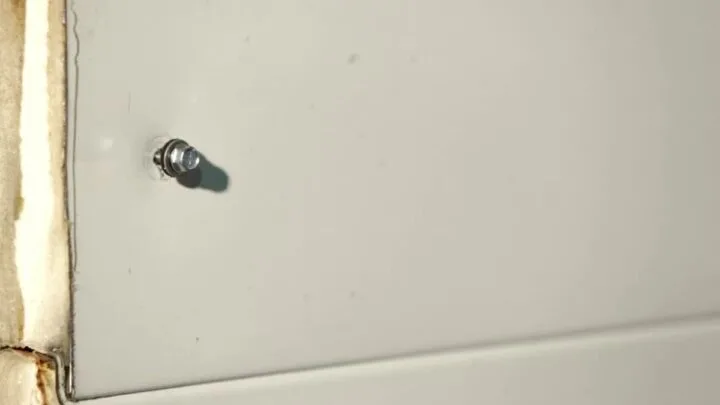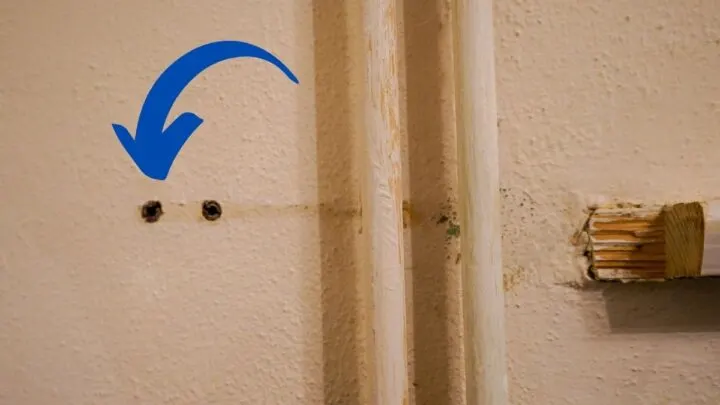There might come a time when you need to remove a screw to disassemble an object. But can you reuse screw holes when putting the item back together?
Sometimes, screws do not fit as they should and they can become loose and fall out, especially when used on softer materials such as wood.
You can reuse screw holes if the screw tightens to the correct torque and is not too loose or rotating freely. It is essential to use a similar-sized screw when replacing to ensure that it is tightening correctly.
Even stripped holes can be reused after a few simple repairs.
Repeatedly tightening and loosening a screw in wood can cause the screw hole to become damaged.
Experienced woodworkers state that screw holes can be reused multiple times. But with every screwing and unscrewing, the sharp edges of the screw incur some damage to the hole’s walls.
Eventually, the hole will become stripped and no longer hold the screw in place. Stripped holes are usually easy to repair and can hold the screws in place.
Can You Reuse Screw Holes In Wood?
As long as the screw feels tight and has a good grip, you are okay to reuse the hole. Some types of wood are more prone to damage from screws than others.
If you reuse a screw hole in one type of wood multiple times, using another type of wood might require you to repair the hole before you can reuse the holes.
Handling Stripped Holes and Loose Screws
You must be familiar with the frustration of loose and falling screws.
Most screws are placed on joints, which means that the quality and reliability of the joint depend significantly on how well the screw fits into the hole.
Loose screws and stripped holes are not too difficult to fix if you have the right equipment and tools.
What Causes Loose Screws?
Before you begin fixing loose screws, you need to understand why the screw became loose in the first place.
The most common reason for a loose screw is the breakdown of wooden fibers in the hole.
These fibers are essential for gripping onto the screw when it is tightened into the hole.
Most wood pieces that undergo stress are more prone to loose screws. Repeated tugging and pushing, or a force acting on the wood, can cause the fibers to become weak and break away.
In addition to stress, the following can also lead to damaged holes:
- Rotting of wood
- Exposure to moisture causes the wood to swell and come apart
- Rusting of the screws

The Type of Wood and Screws
Some types of wood are more susceptible to damage than others.
Take medium-density fiberboard (MDF); since it is made of compressed woodchips, you can expect it to not hold onto screws and solid wood that well.
In addition to the wood, the type of screw you are using can also play an important role.
Screws with coarse threads are designed to be used with soft types of wood, and those with finer threads work better in harder woods.
Fixing A Stripped Hole
There is more than one way to fix a stripped hole.
The method you use will depend on the tools and equipment you have at hand, the type of wood you are working with, and why the hole was stripped.
1. Use A Dowel
If the wood you are working on is of low quality, the best way to fix a stripped hole is to use a dowel or a plug. The process is simple and requires the following tools and equipment:
- A drill machine with drill bits
- A hammer
- Wooden dowels
- Wood glue
To begin with, drill a hole in the screw’s place with a bit that is the same size as the dowel you will be using.
Apply wood glue on the dowel and hammer it into the hole. You may have to wait for the wood glue to dry for a few hours.
Once it has completely dried, you can drill a small pilot hole in the middle of the dowel and then tighten the screw.
2. Use A Larger Screw
Sometimes, a simple fix to a stripped hole is just to use a thicker screw and slightly longer.
The new screw should have threads similar to the old screw, or it should be coarser.
Although this method is one of the simplest, it also risks damaging the wood piece further.
As a rule of thumb, when sizing up the screws, you should only go up by one size or two gauges.
This will minimize the chances of cracking the wood and ensure that the screw fits snugly.
For instance, if the hole is stripped while using a gauge 10 screw, you can use a gauge 12 screw in its place.
3. Use A Hole Repair Kit
There are several types of hole repair kits available on the market.
These kits work by making anchors in the form of adhesives or plastic for the screw.
The screw holds onto the anchor and can be tightened into the same hole.
These kits are more expensive than the other cheaper solutions discussed above.
However, they are suitable for people who have little experience working with tools, hardware, and screws.
4. Replace The Piece
Wood often comprises compressed fibers, which are mixed with binders and resin.
All these components are susceptible to structural damage, spreading beyond the stripped hole.
You may have to replace the entire piece to ensure durability in such scenarios.
If the wood has been significantly damaged, such as swelling by water or cracks running along the surface, you may need to replace the entire piece.
Similarly, if you have filled and drilled the wood piece repeatedly, it can cause structural damage to the surroundings and may need to be replaced.
Another indication that the piece that may need to be replaced is rotting. In this case, you will have to replace it with better and healthier wood.
Summing Up If You Can Reuse Screw Holes
It’s possible to reuse screw holes, as long as they aren’t too damaged from previous usage.
You can also replace the screw hole entirely, which usually yields better results, as it allows for proper adhesion between the two surfaces. Whatever way you choose to go, make sure you do your research!


